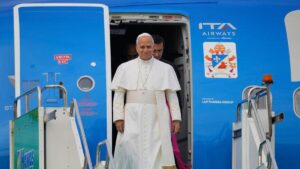
Nestled in the foothills of Victoria’s majestic Grampians mountain range, known to the Indigenous people as Gariwerd, a groundbreaking art center has opened its doors. The Wildlife Art Museum of Australia (WAMA), located in Pomonal, western Victoria, is a pioneering venue that uniquely combines an environmental art gallery with a native Australian garden. This ambitious 16-hectare project has been 14 years in the making, according to Chief Executive Pippa Mott.
“[WAMA is] a gallery and garden precinct that exists in proximity to beautiful Gariwerd Grampians National Park, which is a place of such amazing geological, cultural, and ecological significance,” Ms. Mott stated. The museum’s grand opening on July 5 featured an evocative exhibition titled “End & Being” by Jacobus Capone, which delves into the theme of climate change through a series of pre-recorded performance art pieces created on the glaciers of Mont Blanc in France.
Exploring the Environmental Art Movement
The launch of WAMA marks a significant addition to the environmental art movement, a genre that has been gaining momentum since the 1960s. Ms. Mott emphasized the evolving nature of this art form, noting that artists today are increasingly informed by scientific insights and are addressing pressing environmental issues with greater urgency.
“[Environmental art is] a really broad genre and it’s not a new thing,” Ms. Mott explained. “Artists have forever responded to the environment and the natural world. But I suppose in the past few decades, they’re responding with a little bit more agency, are often informed more by science, and often speaking directly to some of the issues facing the natural world.“
A Botanical Haven with Biological Purpose
Complementing the art gallery, the botanical gardens at WAMA feature 500 native Australian plant species, including 20 of the 40 species endemic to the Grampians region. WAMA Director Jill Burness highlighted the protective measures in place, such as a feral-proof fence, to safeguard these plants.
Ms. Burness elaborated on the gardens’ role as a seed bank, crucial for revegetating the Grampians post-bushfire. “[The protected endemic plants are] not only here, they’re at Halls Gap and they’re certainly protected at the Cranbourne botanical gardens,” she said. “If a bushfire came through here … we could duplicate these plants again from Cranbourne.“
Philanthropy Fuels Future Growth
The Wildlife Art Museum of Australia is a privately funded initiative, with ongoing fundraising efforts to support future expansions. “[This is] stage one of the centre and the endemic garden is just the beginning,” Ms. Mott remarked, emphasizing the importance of philanthropy, grants, and sponsorships in sustaining the museum’s operations.
Admission to the museum is free for children, while adults are charged between $12 and $18. “Obviously, we are a ticketed destination,” Ms. Mott noted. “We have a retail space, we have a cafe, but we are essentially a not-for-profit at the end of the day, and so we hope that what we’re doing inspires people.“
Looking Ahead: A Cultural and Ecological Legacy
The opening of WAMA represents a significant cultural and ecological milestone, offering a space where art and nature converge to inspire and educate. The museum’s commitment to environmental art and conservation reflects a growing global trend towards sustainable cultural practices.
As the museum continues to develop, it aims to attract visitors from around the world, fostering a deeper appreciation for both the arts and the natural environment. With its unique blend of cultural and ecological offerings, WAMA is poised to become a beacon for environmental awareness and artistic expression in Australia and beyond.







